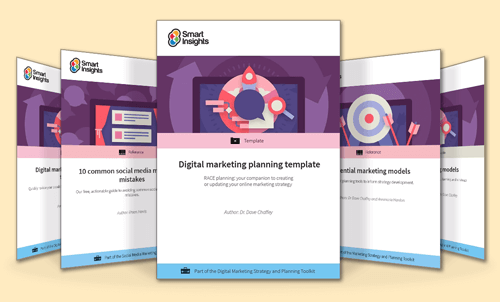4 quick tips for shorter, successful social updates
My dream is to open a clothing store for online marketers. So content marketers can wear t-shirts with the slogan "I repurposed this from a blog post". And copywriters will proudly declare "I kept it short".
Short is beautiful in the online world.
Though that's not quite correct. The right length for text depends on many factors. But if you can make your text shorter while communicating the same message, then that's a good thing.
Why?
Because you don't have a lot of time to capture attention and draw people into and through your text...whether it's a blog post or a product description, email copy or a sales page.
Cutting text down is a particular issue when you have a character limit or space is at a premium, such as with a Tweet or subject line. It's one of the many topics I cover in a new Smart Insights video training course on online copywriting.
You need to be an expert member to access the course, but here are four of the tips featured in the module on short-form copywriting for Twitter and other social networks: a few quick tricks to help fit everything into a 140-character Tweet...
Tip 1: Synonyms are your friends
Every character counts, so synonyms are your friends, pals, mates, companions, buddies, chums, colleagues. Take this comment about a blog post...can you find shorter alternative words?
"Excellent article about..."
We can use synonyms to whittle it down to almost half the length:
Great article about
Great article on
Top article on
Top post on
Beware though. Some words may have the same technical meaning but invoke a different emotional impact. Others may be ambiguous. "Top post" could mean top as in "great" or top as in "first on the page".
Tip 2: Eliminate implied words
Many of the words we use are implicit from the context. So they can be safely removed. Can you rearrange or remove words in this recommendation without actually changing the clarity or meaning?
"I love this article on copywriting: http://ow.ly/t8BhP"
In a tweet from a person, the "I" is implicit. Take it out, and it's unlikely the word love will be seen as an instruction:
Love this article on copywriting: http://ow.ly/t8BhP
And an article on copywriting is a copywriting article:
Love this copywriting article: http://ow.ly/t8BhP
You just saved 5 characters.
Tip 3: Use the active voice
Text in the active voice is generally stronger, but it also cuts the number of words you need. Can you turn this passive construction into an active one?
"Is the improvement in results caused by a change to CTA?"
A quick swap gives us:
Did a change to CTA cause the improvement in results?
Now let's use synonyms and eliminate implied words...
Did a CTA change lift results?
A whopping 26 characters saved!
Tip 4: Try hashtags as context indicators
The original purpose of the much-maligned hashtag in Tweets was to help with search. As Twitter says:
"Clicking on a hashtagged word in any message shows you all other Tweets marked with that keyword."
But you can also use it to set the context for your message, so you don't need to explain that context.
"Images lift clicks by 34%"
We need to add context to this information:
Images lift clicks by 34% when used in marketing emails
We know we can make it shorter...
Images lift clicks 34% in marketing emails
But we can also use the #emailmarketing hashtag to establish the context, which is even shorter:
Images lift clicks 34% #emailmarketing
We could even consider:
Images lift clicks 34% #email
Those are just four quick tips from the new video course on online copywriting for Expert members. I'm the tutor for 6 practical video modules to help you write copy and content that gets read and acted on.






